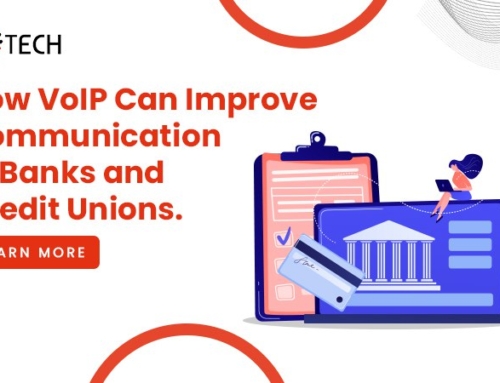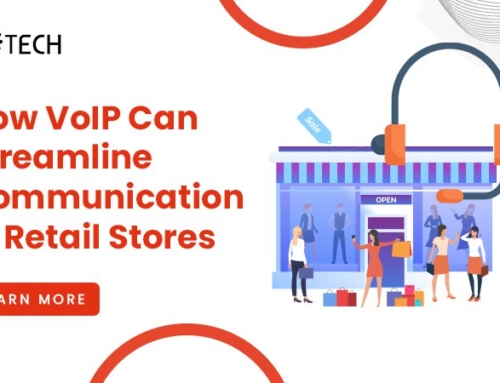
There has been a lot of talk about WebRTC, what it does, and how it will play in the same sandbox as VoIP since development began. Many firms increasingly rely on the cloud-based capabilities of corporate VoIP to handle the heavy, and expensive, lifting of their communications. Many firms now rely on the cloud power of corporate VoIP to take care of the heavy, and costly, lifting of their messaging. VoIP has been in the playground for a long, and it has risen to be a strong alternative or even supplement for communications.
What is WebRTC?
Web Real-Time Communication (WebRTC) is an open-source standard that allows browsers and mobile apps to send data in real-time utilizing simple APIs and communications protocols. This is a well-known technology. WebRTC (Web Real-Time Communications) is an open-source project that allows web browsers and devices to communicate in real-time via voice, text, and video. WebRTC delivers JavaScript-based application programming interfaces (APIs) to software developers.
These APIs allow developers to construct peer-to-peer (P2P) connections between internet web browsers and mobile applications without having to worry about compatibility or content support for audio, video, or text.
Data is transferred in real-time with WebRTC, which eliminates the need for specialized interfaces, extra plugins, or special software for browser integration. By just accessing a webpage, WebRTC allows for real-time voice and video communication.
What do You mean by VoIP?
VoIP, often known as IP telephony, is a method and set of technologies for delivering voice conversations and multimedia sessions via Internet Protocol networks, such as the Internet. The terms Internet telephony, broadband telephony, and broadband phone service refer to the delivery of communications services (voice, fax, SMS, and voice-messaging) over the Internet rather than over the public switched telephone network (PSTN), also known as traditional phone service. In applications such as VoIP phones, mobile applications, and web-based communications, proprietary, and open-standard protocols have been used to enable Voice over IP.
How does WebRTC work?
To integrate communications technologies within web browsers, WebRTC makes use of JavaScript, APIs, and HTML. Its goal is to make audio, video, and data transmission across browsers as simple as possible. Most major web browsers support WebRTC.
WebRTC APIs are used to access and record video, audio, and text-based data from devices, as well as to initiate, monitor, and terminate P2P connections between devices via browsers and to provide bidirectional data transmission over numerous data channels.
WebRTC connects people by sending real-time audio, video, and data from one device to another via peer-to-peer (P2P) connections. WebRTC can be used in conjunction with Session Traversal Utilities for NAT (STUN) servers in instances when users are on different Internet Protocol (IP) networks with Network Address Translation (NAT) firewalls that restrict RTC. This enables peer connections to be made by translating a given IP address into a public internet address.
However, some networks are so restricted that even a STUN server is unable to translate IP addresses. In these circumstances, WebRTC is utilized in conjunction with a TURN server, which transmits traffic between users and allows them to connect. To find the optimum connection, the Interactive Connectivity Establishment protocol is employed.
Due to their huge size, audio and video files must be compressed before being delivered. Additionally, media received over a peer-to-peer connection must be decompressed. To accomplish this, WebRTC employs a codec technique.
Differences between WebRTC and VoIP?
WebRTC is nearly exclusively performed within the browser or mobile application itself, using native APIs or enhanced APIs given by SDKs such as those offered by VoIPTech solutions. As a result, most users will not need to install or configure anything to use the technology. WebRTC capabilities are most commonly used over open internet connections, the same ones you use to access the web.
VoIP, on the other hand, is conducted over the company’s network. It can’t work without a network. It also demands a well-functioning infrastructure of routers, switches, servers, and cables, as well as specialized hardware or software for access, with allowances for VoIP traffic expressly incorporated into it. VoIP is frequently bridged with phone networks to facilitate access through carrier networks.
Consider WebRTC a VoIP offshoot. WebRTC can be used by a firm to allow live interactions on their website or mobile apps.
This is widely used for customer service. WebRTC and VoIP frequently use the same transport protocols. It is possible to use WebRTC with a VoIP endpoint if the appropriate parameters are used. However, you’ll need to convert the signaling language into a format that the VoIP endpoint can comprehend, as well as maybe media transcoding if the signaling languages aren’t compatible. You’ll need to create a link between the media and signaling channels to accomplish this.
Keep in mind that WebRTC can be used for a variety of purposes other than VoIP. While most firms utilize VoIP for two-way or multi-party conferencing, WebRTC is used for:
- Incorporate video into customer touchpoints
- Real-time collaboration with a rich user experience
- Contextual apps that connect data and interactions are being developed.
- Without the need to install any additional software, you can share your screen with others.
- Media playback should be synchronized between groups.
- Instantly share your data and messages.
These systems could both be outsourced to third-party service providers. Sure, you can build your solutions using either, but using a third-party platform managed by specialists is easier and less expensive, ensures high quality, and gives you access to global reach and scalability with ease.
When it comes to making decisions between VoIP and WebRTC, two aspects frequently come into play:
- Real-time communication has a business case.
- The use of WebRTC or VoIP is technically feasible.
If you’re just getting started, WebRTC is the way to go. It’s easier to use and doesn’t require any prior VoIP experience or knowledge. It also works well with other web and mobile technologies. If you already have a VoIP system in place, WebRTC can be used to add video calling and other multimedia features.
Start with WebRTC for customer engagement apps and expand from there. WebRTC has the advantage of being simple to use and incorporated into almost any existing system. Both VoIP and WebRTC have advantages and disadvantages, but the choice ultimately comes down to what the company requires. Our specialists can assist you to understand your alternatives and, if our solutions don’t meet your needs, we can refer you to others who do.
Why choose VoIPTech solutions for WebRTC?
Adding a real-time communications solution to your website or mobile app is simple with the VoIPTech solutions Platform. You don’t have to be concerned about the difficulty of implementing such a system. Furthermore, our platform is built on WebRTC technology that has been fine-tuned, optimized, and expanded by our team of experts, ensuring that it will work with all major browsers and mobile devices in any setting.






